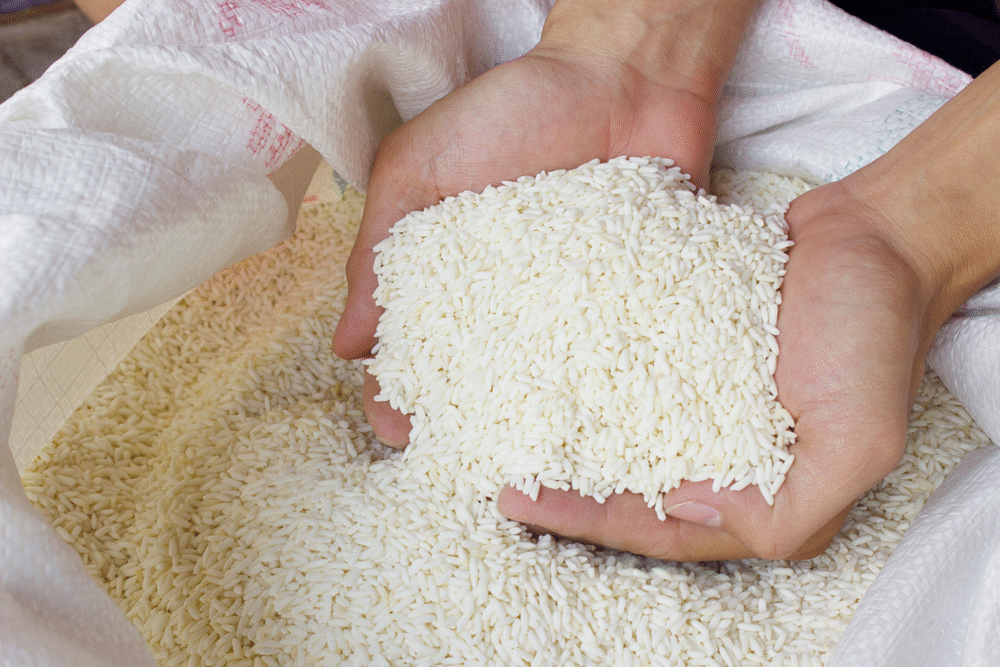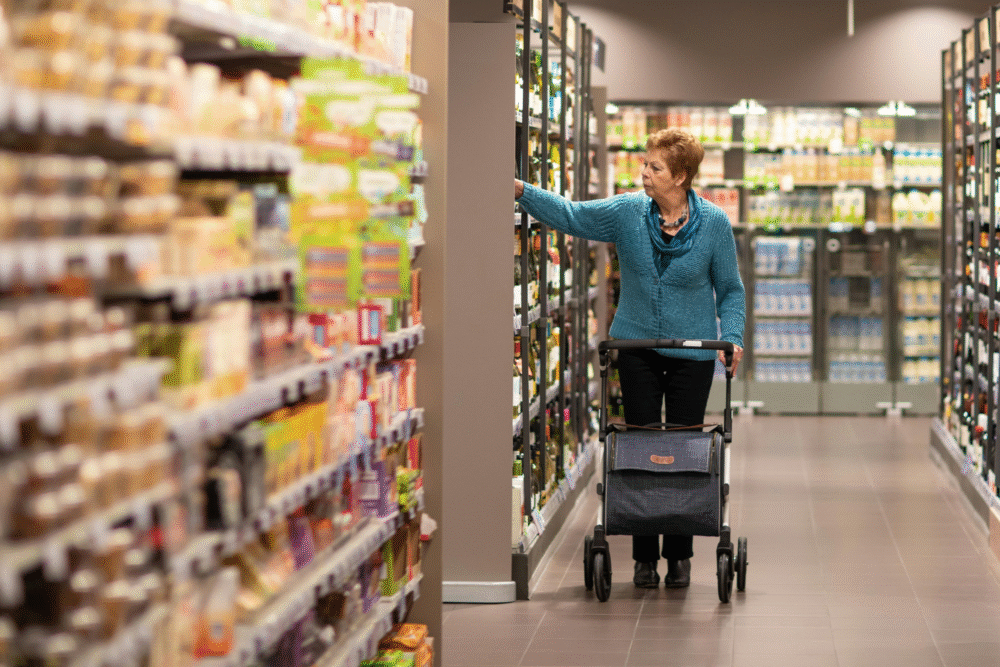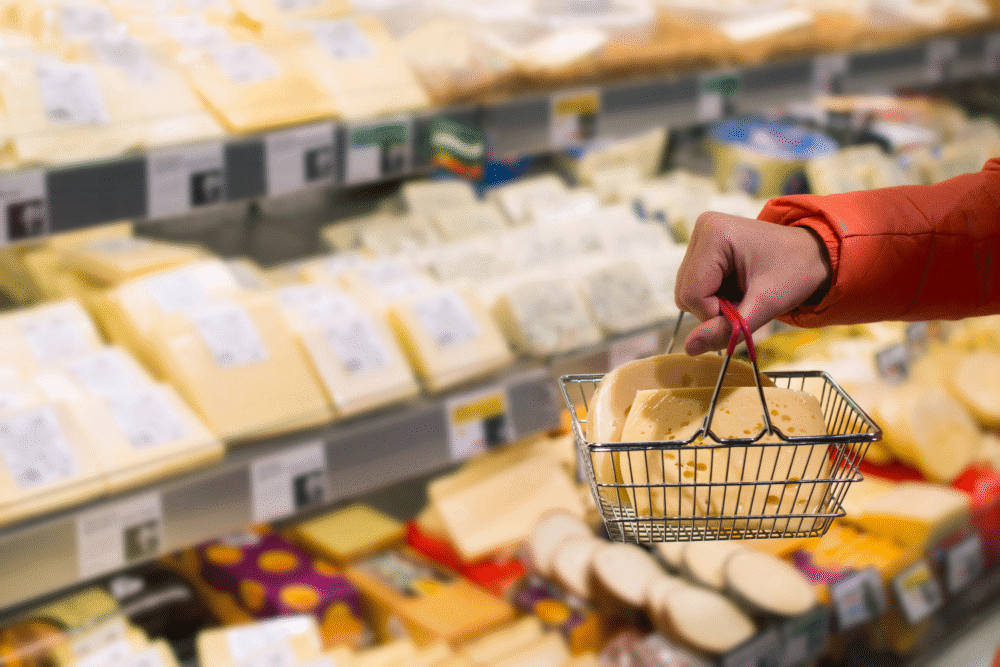Smart grocery swaps help maintain food quantity and value despite shrinkflation effects.

Shrinkflation reduces product sizes without lowering prices, quietly impacting grocery budgets. Shoppers can combat this by making informed substitutions that maximize quantity and cost savings. By focusing on unit prices, opting for store brands, buying in bulk, and prioritizing fresh or frozen options, consumers secure better value without relying on coupons. Adopting these strategies supports practical grocery shopping and stretches food budgets effectively.
1. Choose frozen vegetables instead of fresh for larger portions at better prices.

Frozen vegetables often offer larger portion sizes and lower costs compared to fresh. These products are harvested and frozen at peak ripeness, preserving nutrients and flavor. Avoiding spoilage is another benefit, as the freezing process extends the shelf life significantly.
Consumers also enjoy more flexibility with frozen options, allowing them to avoid waste by using only what is needed. The consistent availability of frozen vegetables eliminates seasonal price fluctuations, ensuring a stable budget throughout the year. Frozen options can also retain a similar taste profile to fresh, enhancing culinary variety.
2. Swap name-brand snacks for store-brand versions with comparable taste and quality.

Store-brand snacks frequently match the taste and quality of name-brand versions but cost significantly less. These alternatives undergo similar quality checks, ensuring they meet consumer expectations. Often, they use the same manufacturers as national brands, maintaining flavor authenticity.
Choosing store-brand snacks can create substantial savings over time, providing ample room within a budget for other necessities. By selecting these alternatives, consumers can maintain satisfying snack routines without compromising on quality or taste. Brand loyalty occasionally overshadows the advantages of these budget-friendly options.
3. Replace pre-cut fruit with whole fruit to get more for less money.

Whole fruits offer more content and value than their pre-cut counterparts. Buying fruits in their entirety often results in fewer processing costs passed onto the consumer, leading to more substantial savings. Whole fruit maintains freshness longer, reducing potential waste from spoilage.
Cutting fruits at home allows consumers to control portion sizes to fit personal dietary needs or preferences. This practice increases control over quality and ripeness, ensuring optimal taste and texture. Whole fruits also come with the bonus of utilizing every part, potentially reducing unnecessary waste.
4. Opt for bulk bags of rice instead of single-serve packs to stretch servings.

Purchasing rice in bulk bags instead of single-serve packs enhances savings and stretches servings. Bulk buying reduces packaging costs and often results in a lower cost per unit. Larger bags also eliminate the frequency of repurchasing, offering convenience and time savings.
Rice stored correctly remains fresh over long periods, maximizing value while minimizing waste. Consumers benefit not only from larger quantities but from the flexibility to cook varying amounts according to need. Bulk options fit well into meal planning strategies, aligning with efficient grocery shopping methods.
5. Exchange sugary sodas for iced teas that come in bigger bottles and lower cost.

Iced teas packaged in bigger bottles generally offer a more budget-friendly alternative to sugary sodas. Besides savings, they come with fewer calories and reduced sweetness, appealing to health-conscious consumers. Furthermore, they’re versatile as both a refreshing beverage or mixed into other drinks.
Bigger bottles reduce the need for frequent restocking, saving time on grocery runs. While sodas may appeal with sugary flavors, iced teas provide the added benefit of hydration without the sugar crash. Incorporating these into daily habits promotes cost-effective long-term consumption.
6. Trade shredded cheese for blocks of cheese to control portion size and savings.

Opting for blocks of cheese over shredded offers control over portion size and budget. Blocks are often priced more affordably per ounce than their shredded counterparts, leading to significant savings. Consumers can customize their shred size at home for additional culinary creativity.
Block cheese allows better moisture retention, maintaining quality longer and reducing potential waste. Controlling shred size also eliminates the need for anti-caking agents, enhancing healthier meal preparation. These blocks provide flexible culinary versatility, fitting various recipes or serving as convenient snacks.
7. Buy generic canned beans rather than branded ones to enjoy more quantity affordably.

Generic canned beans often deliver the same nutritional value as branded counterparts but at a lower cost. Both options undergo similar canning processes, ensuring durability and taste preservation over time. Choosing generic beans ensures budget-friendly meal ingredients without sacrificing quality.
Price per ounce typically favors generic options, allowing consumers to allocate funds to other grocery necessities. The versatility of beans supports diverse meal planning, stretching food budgets while providing valuable protein sources. Satisfaction in taste and texture remains consistent across both generic and branded beans.
8. Select family-size cereal boxes over smaller boxes for more servings per dollar.

Family-size cereal boxes offer more servings per dollar compared to smaller boxes. These larger packages reduce packaging waste and overall costs, providing consumers more value long-term. Investing in family-size options minimizes frequency of purchases, saving both time and money.
Larger boxes also encourage a more structured consumption, helping track inventory effectively. For households with multiple cereal consumers, family-size options ensure consistent availability and satisfaction. Although perceived as bulkier, the cost savings significantly outweigh potential inconveniences in storage space.
9. Use powdered juice mix instead of ready-to-drink juice to extend the number of servings.

Powdered juice mixes extend the number of servings compared to ready-to-drink juice. These mixes often combine with water to create multiple servings, offering substantial savings in the cost per ounce. Consumers can adjust flavor strength, catering to personal taste preferences.
Compared to ready-to-drink options, powdered mixes provide easy storage and portability, fitting comfortably into less space. They’re perfect for larger households or social events, offering sufficient quantities without consistently restocking. Versatility in creation extends to recipes, enhancing value beyond simple beverages.
10. Substitute frozen meat packs for fresh cuts to get better volume at a reduced price.

Frozen meat packs offer greater volume at a lower price than fresh cuts. Frozen options come without the premium cost associated with freshness, providing the same protein quality and nutritional value. This choice supports long-term budgeting and flexible meal planning.
Vacuum-sealed packaging maintains the meat’s quality over extended periods, reducing spoilage and waste. Consumers benefit from the ability to portion and thaw according to need, enhancing convenience and minimizing waste. Although initially frozen, they hold flavors and textures similar to fresh meats post-cooking.
